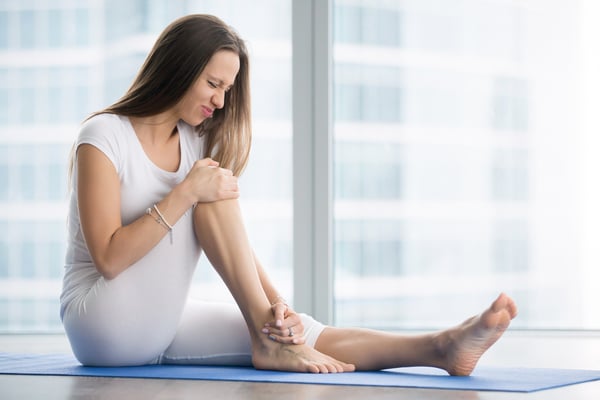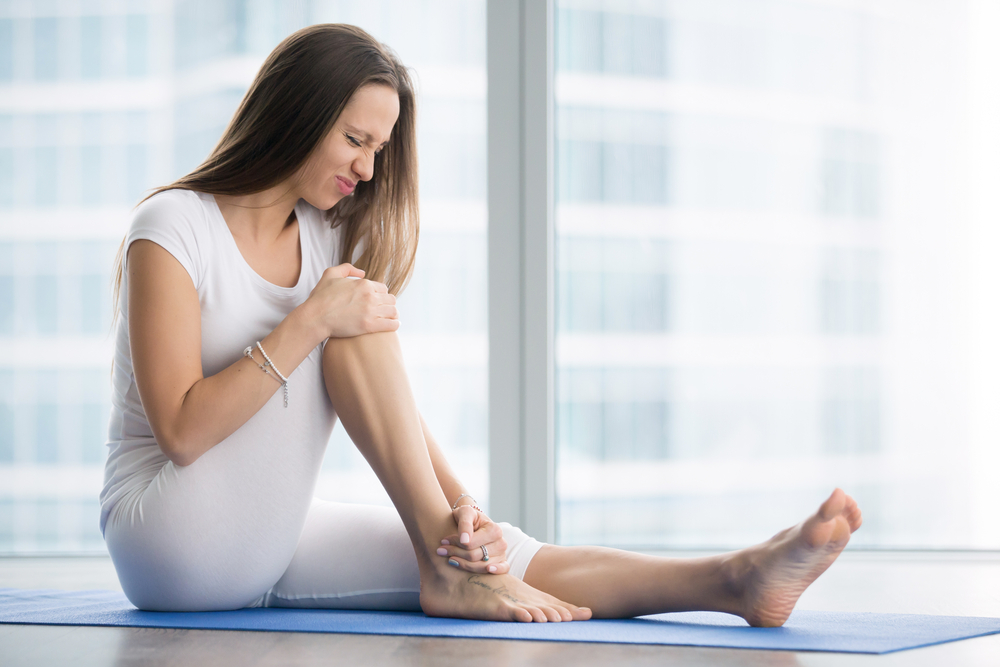How to Stay Active When Your Body Says “No”

You know you're supposed to be exercising, walking and burning calories, and you're not. You can't. Your body won't let you. Constantly tired, you've no stamina for any physical activity and walking is exhausting and uncomfortable. The thought of exercise, much less going to the gym, seems out of reach. What's more, you feel like a failure because you can't make your body do what it doesn't want to do. So how do you get past this? I suggest starting slowly with some very basic, easy-to-do, at-home activities.
Uncover Hidden Medical Concerns
First, rule out any medical reasons. An appointment with your primary care doctor will reveal any underlying medical issues that require attention. It's also possible that a hidden vein condition may be the cause. Our quick online quiz will help you find out if a vein screening is an appropriate next step. Then, vein screenings are free and will provide a more definitive answer.
Getting Started
When you're ready to take the first steps toward daily physical activity, set goals for yourself. Our recommendation, which comes from patient success stories, is to start small. If you can do 5 minutes (or more), then start there and set your goal at increasing by one minute each week. Over time, build toward 30 minutes of daily activity - something that leaves you slightly winded to the point where you'll need to catch your breath in a conversation afterwards.
No gym membership is necessary. Look around your home. Chances are you already have everything you need to begin. Start by doing one daily activity that will get you up and moving
- House cleaning activities are a great place to start. Vacuum the floors one day...then dust the furniture the next.
- Music makes housework more active AND more fun. Increase the pace by putting on your favorite music and dancing around the house to do your chores.
- Over time, challenge yourself to move a little faster. Time yourself to see how long a chore takes you, then pick up the pace and try to be faster than you were the day before.
- Simple things like picking up house plants and move them either inside or outside (or vice versa), from one room to another, or from upstairs to downstairs. The plants act as weights and add another level to your activity.
- Sitting in a chair, use canned vegetables as weights. With a can in each hand, lift your arms to the sides, to the front, and press them overhead. Then add calf raises and leg lifts. As you get stronger, increase the number of repetitions starting with 3 each, then 5 and working toward 10 repetitions or more each side.
- Hold onto a chair or wall for support and do leg raises and calf raises from a standing position.
- Try out DVD or YouTube fitness for beginner videos! Some great categories are dance, yoga, pilates, etc. Make sure you are picking something with a lot of short segments.
- Take it outside. Walk to the end of your driveway or out to your mailbox, make one lap around your house. Getting outdoors offers the added benefit of sunshine and fresh air.
- Simple stretches which can be done either sitting or standing. Stretching is a good way to keep muscles and ligaments active, an important part of keeping healthy as we age. Remember to take slow, deep breaths when you stretch. Pay attention to your body and notice if something is painful. Never press past the point of pain, and if pain persists, see your primary care doctor.
- Try swimming. If arthritis is a problem, head to your local YMCA or community gym to go for a swim. Swimming is great exercise and the water takes the pressure off of sensitive or painful joints.
- Invite a friend to join you in your activity journey...someone who can hold you accountable and keep things moving forward in a fun and inspiring way. You can set goals together, talk about what you did each week, brainstorm new activities to keep things fresh and interesting.
Instead of feeling shameful about your inability to join in normal activities and guilty for not doing anything, commit to starting small. Any activity you do will help you feel better about yourself and will provide a starting point on which to build.
While physical activity won’t prevent a vein condition, it does help relieve symptoms in their early stages. Staying physically active at any age also helps control weight gain, reducing the risk of weight-related vascular issues. It reduces the feelings of depression, fatigue and hopelessness, helping you feel better about yourself. Just knowing you’re accomplishing something and seeing yourself improve over time makes you feel stronger and more in control of your life.
While you may not be able to do what you used to, but don't let that stop you. Start with what you can do and build from there. At Missouri Vein Care we are hear to help you with vein and leg pain conditions contact us today to set up a vein screening!


